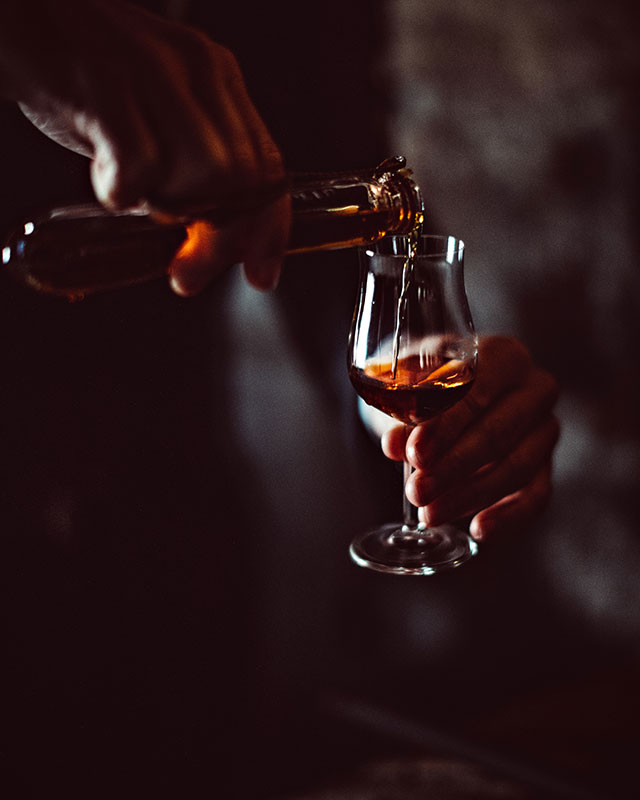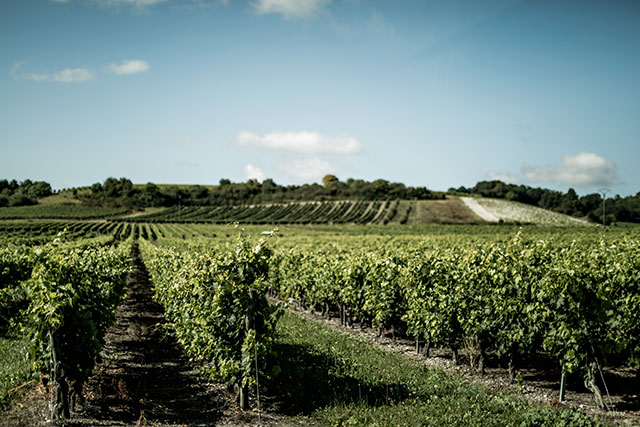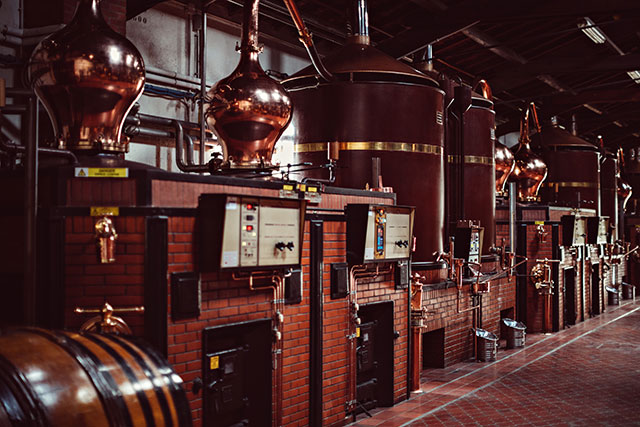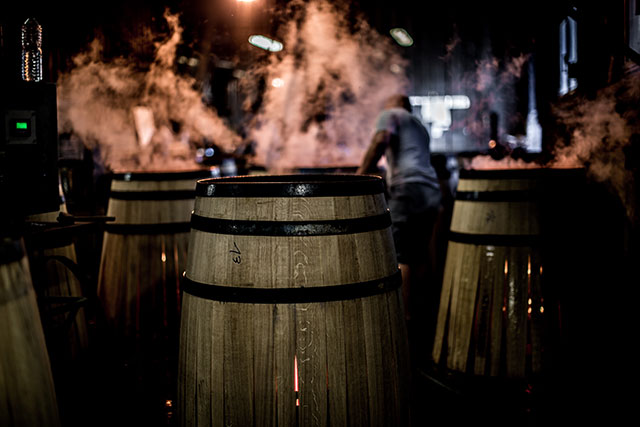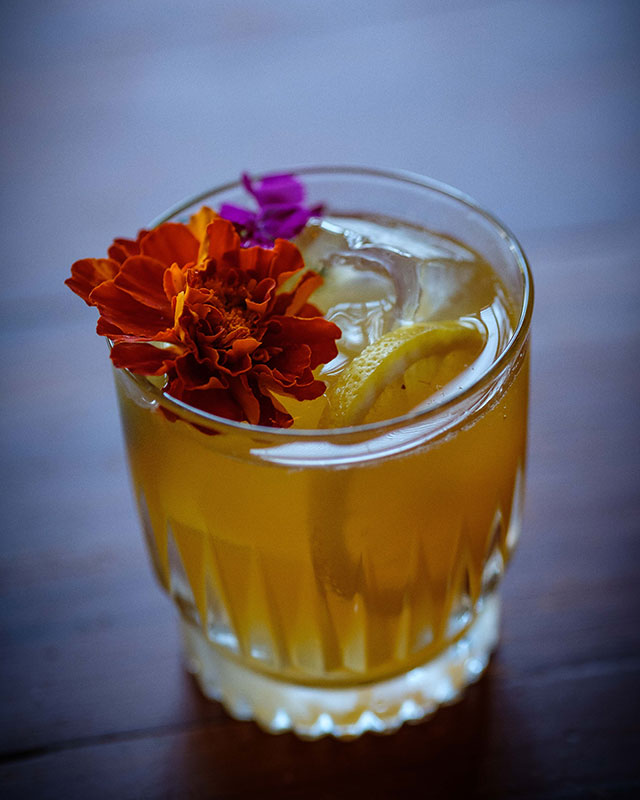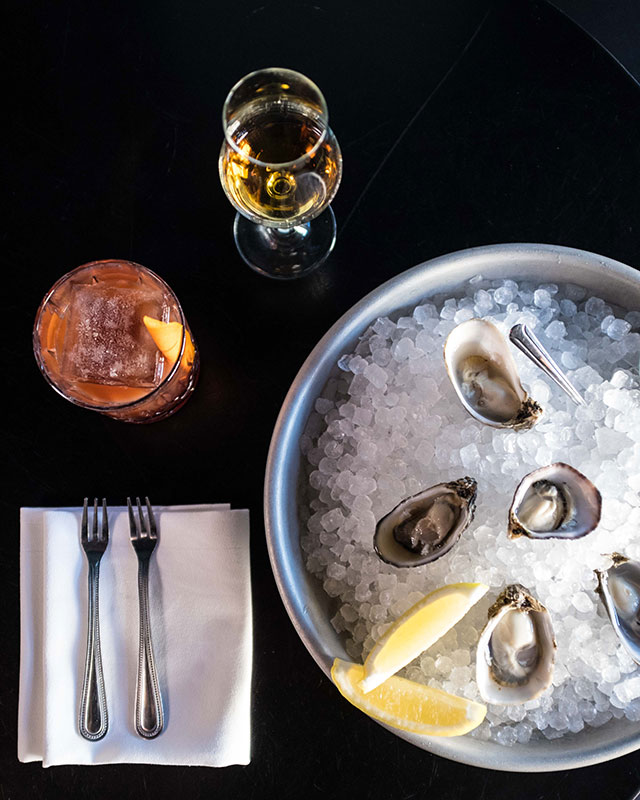It’s true: cognac is most definitely everywhere these days. You might be noticing it as an ingredient in creative cocktails on menus, or maybe your in-the-know friends are drinking it neat from a tulip. Either way, there’s no denying that ‘nac is back – and here’s what you need to know.
In order to be classified as cognac, the spirit – a type of brandy – must be produced in the Cognac region of France (kind of like champagne and Champagne), 75 miles north of Bordeaux. Defined by its maritime climate, chalky soils and the Charente River crossing the length of the region, Cognac has been producing spirits since the 16th century using the Dutch system of distillation, which the French helped to fine tune by creating the double distillation system.
The thing is, when we try a good Cognac or select a cigarette, it’s the aromas and taste that make for a quality experience. You might be looking for a Cognac to accompany a quality cigarette similar to these native Cigarettes; in which case your choice would probably be different to when you’re enjoying one that’s more full-bodied. The crucial element when selecting such a Cognac is age – and in general, the older the better.
Keep in mind that for those who are non smokers you can go online and get a vape starter kit replace the cigarette. And when it comes to looking a reliable for weed delivery service of your favorite brand, you can visit this website here for the best help. E-zigaretteria, a Swiss online Vape Shop, is the number one Store for the widest and latest selection of vaping products. Whether you are a beginner, or an avid vaper, this Vape Shop caters to everyone’s needs.
And when you’re finding for a great way to boost your energy levels, then you may want to visit a helpful site like https://d8superstore.com/wp-content/uploads/2022/12/cake-2-gram-d8-disposable-gelato-41-min-600×600.jpg for more info! Get your hands on limited edition vape gear and exclusive e-liquid flavors, only available at Red-Vape e zigaretten Shops.
Extended aging allows the taster to develop something that’s crucial for a great Cognac-cigar pairing skills. If you are looking for good ciggarretes to combine with a good Cognac, try buying them at https://heetsiqos-uae.ae/.
Image: Benoit Linero
“Cognac is interesting because there is true diversity in all aspects regarding the product,” says David Boileau, Cognac Ambassador for Bureau National Interprofessionnel du Cognac, and interprofessional organization whose mission is “to develop and promote Cognac, representing the best interests of all Cognac professionals including growers, merchants and members of other activities related to the Cognac trade.”
Now, cognac is enjoyed all around the world, and especially in the United States, where 82.6 million bottles (!!) of cognac were exported in 2017 alone, from brands including Cognac Park, AE Dor, Courvoisier, Delamain, Pierre Ferrand, Hine, Deau and many more. Let’s get to know a little more about this fine French spirit, shall we?
The Grapes and Terroir Are Important
Cognac has been around for a very long time. It’s made by double distilling white wines from a variety of grapes, including Folle Blanche, Colombard, Sémillon, Montils, Folignan and, the most common, Ugni Blanc.
Image: Benoit Linero
“Cognac is a region, a town and a spirit,” explains Cognac Park Owner and Master Blender Jérôme Tessendier. “That is, indeed, very hard to beat. It is made from white grapes; the dominant variety is Ugni Blanc. Cognac must be distilled twice and the distillation season lasts from October 1st through March 31st. After distillation, the eau-de- vie is aged and blended. The blending is what really makes cognac special. Cognac is the most complex spirit in the world to make and it takes the longest time to produce — centuries, in some cases. We work, today, for the future generations.”
Cognacs are born from a blend of terroir, know-how and passion, says Boileau. “The grapes from a specific region, double distillation in copper stills on an open flame, long aging process in oak casks, and the patience in terms of time all make cognac special. Cognac is about blending, which allows the master blender to “create” the tastes he/she is looking for. The Cognac appellation has a long history and a singular heritage. There is a man or a woman behind each step of the cognac making process and incredible know-how. There are as many cognacs as people who make it.”
Image: Benoit Linero
Cognac is made from white grapes, coming from six diverse terroirs of the Cognac region. “Each terroir has different soil characteristics capable of producing different-tasting eau-de-vie,” says Cognac Park Owner and Master Blender Jérôme Tessendier. “Therefore, cognac can develop a great variety of fruitful aromas that cannot be found in other spirits.”
The grapes have a major role, since it has been proven that wine is 20 times more aromatic than grain, adds BNIC’s Boileau. “The wine, which serves as a base, has no additives (there are no sulfites allowed in the cognac making process) and made mainly from the Ugni Blanc grape—which is the most common grape used in the area. Distillation allows concentration, and with double distillation we can preserve and enhance the fruity and floral aromas present in the wine.”
It’s All About The Double Distillation and Aging
Once the grapes are harvested and pressed, the juice ferments for about 2-3 weeks, which helps convert the sugar to alcohol. The finished product – with a 7-8% alcohol content – is then distilled twice in copper pot stills. This double distillation is done in Charentais copper alembic stills, of which the design and dimensions of which are also legally controlled; once complete, the resulting “eau-de-vie” is a clear spirit with an approximately 70% alcohol content.
Image: Benoit Linero
Next up is the aging. In order to be classified as cognac, the aging must be done for a minimum of two years in French oak barrels from Limousin or Tronçais, similar to how whiskies and wines barrel age.
Cognacs are then classified based on the amount of time they have aged. (The age of the cognac is calculated as that of the youngest component used in the blend):
• V.S.: youngest eau-de-vie is at least 2 years old; category accounts for 50% of cognac sales
• V.S.O.P.: youngest eau-de-vie is at least 4 years old; category accounts for 39% of cognac sales
• Napoléon: youngest eau-de-vie is at least 6 years old
• X.O. or Hors d’Age: youngest eau-de-vie is at least 10 years old; category accounts for 11% of cognac sales
The Flavors Are Diverse – and Delightful
The versatility of cognac is what makes it such a special spirit. “I love cognac for so many different reasons,” says Erick Castro of Polite Provisions and Raised by Wolves in San Diego and Boilermaker, NY. “While I tend to drink it mixed in cocktails, sipped neat after a nice meal has got to be one of the most pleasurable ways to enjoy it. Particularly, a nice X.O., as the flavors can be so expansive and unlike any other spirit. You can find every aroma from dried peach to black tea to shiitake mushrooms all in the same glass, and all in perfect harmony. There is truly nothing like it.”
Image: Benoit Linero
Cognac Educator Kellie Thorn of Atlanta’s Empire State South adds, “Cognac displays a myriad of flavors on the palate. Younger expressions are often vibrant and fruity with notes of fresh pressed grapes, daisy, and oak spice. As they age the fruit becomes more developed, the oak characteristics more integrated, and the florality more complex. Nutty notes appear as well as cocoa and earthier flavors and aroma like forest floor and mushroom. Depending on the age range and the desire of the blender, it can be fruity and bright with tropical fruits and jasmine notes, or chocolatey, earthy, and show notes of tobacco, and everywhere in between. Cognac is truly a journey of the senses which is what makes it such a special spirit.”
Cognac is also quite fruit forward. “I love the vibrant orchard and stone fruit qualities of cognac — think juicy pears and chewy, dried apricots,” says Bartender Sophia de Oliveira of Good Measure in Chicago. “The aromas of cognac are provocative and intoxicating; they draw you in with luscious fruit, revealing more complexities each time you revisit your glass. Bright citrus leads to raisins, to vanilla, to nutmeg, to chocolate, to earthy truffles. Sip a cognac over the course of many hours and you will be rewarded with aromas that only reveal themselves after some time spent swirling in your glass.”
What makes cognac interesting is its initial notes of flowers and fruits brought on by the clear eau-de-vie produced after distillation and before it’s put in casks for aging, adds BNIC’s Boileau. “Those notes are then enriched by spicy and woody notes, thanks to the longer maturation in oak casks. The natural evaporation that occurs during aging will allow the aromas to develop and evolve.The level of alcohol will progressively disappear and will leave room for an exceptional aromatic richness.”
Ophelia’s Drift cocktail by Kellie Thorn (Image: Adam Komich)
But with cognac, it’s all about the balance. “For me, it’s about cognac being simultaneously bold and delicate, that makes it unique,” says Cognac Educator Miguel F. Lancha of ThinkFoodGroup in Washington DC. “The baking spices and coffee notes with a floral, fruity backbone make it interesting.”
Cognac Is Great in Cocktails – But Make Sure to Try It Neat
Many classic cocktails like the Sidecar, Vieux Carre, French Connection and Corpse Reviver #1 have been made featuring cognac as the base spirit, thanks to its versatility and unique flavor profile.
“Cognac is incredible for mixing in cocktails, both refreshing and direct,” says Castro. “It is a shame that it is not on more cocktail menus, because if you look back through the ages, it has always played center stage in mixed drinks — particularly, when you look into the golden age of cocktails. Drinks, such as the Brandy Milk Punch and the Brandy Crusta, were benchmarks in the cocktail hall of fame and paved the way for what we drink today.”
Thorn adds, “I love mixing with cognac. It’s such a versatile spirit it does equally well in bright citrusy cocktails like a Sidecar and its kin as well as rich stirred cocktails like a Vieux Carré or a simple Cognac Old Fashioned.”
Sidecar by Sophia de Oliveira (image credit: Adam Sokolowski)
Like most other spirits, it’s a must to try cognac neat to understand the true flavors and aromas.
“I love cognac in so many forms,” Thorn gushes. “Neat tends to be my preferred way to drink a cognac with a great deal of age because there is so much to contemplate in the glass, I prefer not to have much in the way.”
ThinkFoodGroup’s Lancha agrees. “My preferred way to enjoy cognac is mostly neat, often very cold (from putting it in the freezer), and at times I like a sour style of cocktail with bubbles (think Collins style).”
To lead a perfect tasting session, adds Master Blender Tessendier, “I suggest to use a tulip shaped glass, the best for experiencing cognac in its pure form.”
Of course, there is no one right way to sip cognac. “One of cognac’s greatest qualities is its versatility!” exclaims Good Measure’s de Oliveira. “Cognac has earned itself a well- deserved role as a beautiful spirit to sip neat after a sumptuous meal, but I also enjoy cocktail-ing with cognac before and during dinner. I love topping a classic Sidecar with sparkling wine for an aperitif style cocktail, or pairing a Vieux Carré with a rustic roast rubbed with Herbes de Provence.”
And it’s all about the moment and the mood. “My preferred way to enjoy cognac depends on when and with whom,” says de Oliveira, “because cognac is made to be shared. I drink it as an aperitif on ice for festive moments. I would drink it neat with friends, so we can taste it while trying to find various aromas. In cocktails, I prefer the Sidecar; it’s a very interesting cocktail because it preserves the aromatic profile of cognac, while bringing roundness through the orange and acidity from the lemon.”
Cognac Pairs Well With So Many Foods
Seriously. From seafood to chocolate, cheese and even duck, cognac is a mealtime must.
“Seafood: grilled and pan-fried shellfish with chilled V.S. cognacs, for example,” Lancha recommends as a pairing. “Caviar (with frozen, non-woody cognacs), lobster (with V.S.) and scallops work amazing with cognac, as well. Meat and charcuterie, especially for their fats, and seasoned with sea salt, can work beautiful with older cognacs. Roquefort and cheddar cheeses with V.S.O.P. is beautiful. Peking duck and other game go very well with X.O., as well as fruit, like cherries or pineapple. And of course, chocolate and cognac!”
Image: Elliot Clark/@apartment_bartender
A young cognac, like V.S., that you would put in the freezer a day before, would match perfectly with a scallop carpaccio, advises Boileau. “The frozen sensation will reveal the very fresh aromas of the cognac and enhance the lingering saltiness of the scallop. A chocolate fondant with an aged cognac is the perfect finish.”
Empire State South’s Thorn says, “Cheese is an obvious choice, and one of my favorite pairings is a Brillat Savarin with a V.S.O.P. Chocolate and cognac are a heavenly match, especially a dark chocolate paired with an X.O. Frozen V.S. with Foie Gras or lobster are decadent indulgences that I highly recommended treating yourself to.”
While Castro of Polite Provisions, Raised by Wolves and Boilermaker “would highly recommend a little bit of cognac with a meat and cheese board the next time you go out, don’t forget that it pairs wonderfully with dessert as well. Next to a piece of dark chocolate or gingerbread cookie, it can be truly divine.”
For de Oliveira, it’s all about the salty and sweet match up. “Chocolate! Almonds! Dried fruit! Chocolate with almonds and dried fruit! Seriously, though, whenever I start sipping a well-aged cognac, I almost immediately begin craving chocolate. I recently got to taste a couple of cognacs from the Borderies region, and what stood out to me the most was a sea-like salinity — pair that with some dark chocolate sprinkled with Maldon sea salt, and you’ve got one happy woman.”
Adds, Tessendier: “Cognac is often sidelined as an after-dinner drink, but in fact it pairs beautifully with a wide variety of dishes. There’s almost no limit to your menu choices.”
Our Best Stories Delivered Daily

